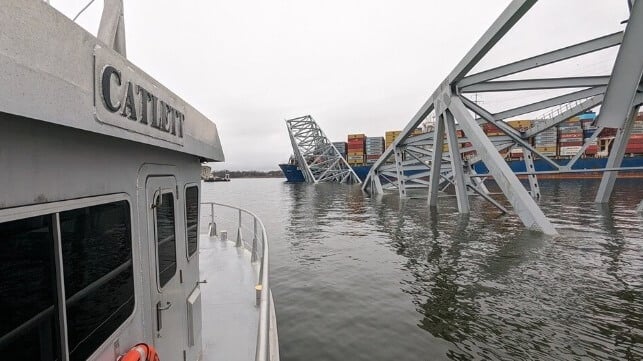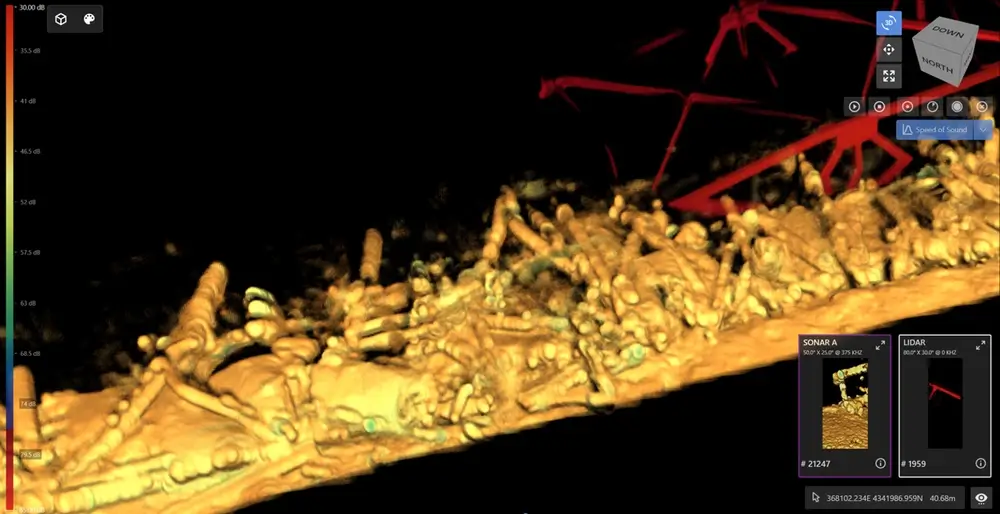Tangled Bridge Girders Make Removing Ship "More Complicated Than We Hoped"
When it comes to the salvage, there are still more unknowns than knowns, cautions Maryland's governor

The operation to extricate the boxship Dali from the wreckage of Baltimore's Francis Scott Key Bridge will be even more complex than initially expected, the Coast Guard said Monday. The bridge span will have to be cut loose and lifted off the Dali's bow in order to refloat and remove the vessel - and that 4,000-tonne steel span is in rough shape.
Rear Adm. Shannon Gilreath, Commander of Coast Guard 5th District, said that recent dive surveys of the water around the vessel reveal that "it is more complicated than we had hoped for." Sonar and lidar scans show that the bridge wreckage underneath the water is significantly more warped and damaged than the sections of the span that are visible to the public, he said.
"Below the waterline, along the bottom, is very challenging because these girders are tangled together, intertwined, making it very difficult to figure out where you need to eventually cut," he said. In some bridge sections, the girders are "three-foot I-beams of inch-and-a-half steel."

3D sonar depiction of the bridge's wreckage on the bottom (USN SUPSALV)
The unified command has repeatedly turned down questions from the press about the timeline for reopening the waterway and freeing the ship, given the exceptional complexity of the operation.
"If you look at the ability to move the Dali out, there are still more unknowns than knowns. There are a tremendous number of variables as we continue to move the debris out . . . there are still things that we just do not yet know about how that's going to translate into a timeline," said Maryland Gov. Wes Moore at a press conference Monday.
Even coordinating the work is a complex and challenging project in and of itself. The unified command is working on reopening three separate auxiliary shipping channels to start moving tug and barge traffic in and out of the port. There are 50 assets at work on the water, and 370 people involved in the round-the-clock operation, the governor said.

that matters most
Get the latest maritime news delivered to your inbox daily.
Beneath the surface, the waters of the Patapsco River are so murky that divers have to work without lights on, according to the U.S. Army Corps of Engineers. If they tried to use headlights, it would be like putting high beams on in a heavy snowstorm from all the floating mud and debris in the water. Instead, they operate nearly blind, relying on verbal guidance from crewmates aboard the dive support vessel who monitor their movements with sonar and give them direction cues.
"You cannot overstate the complexity of this operation," said Gov. Moore at the press conference.
